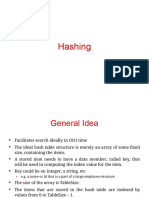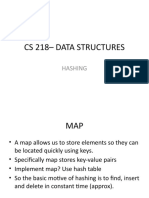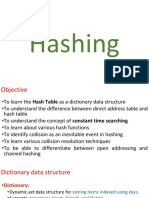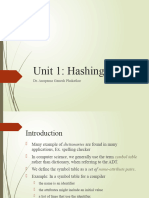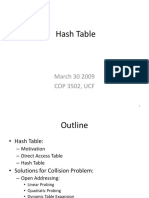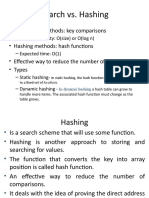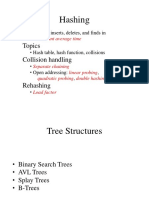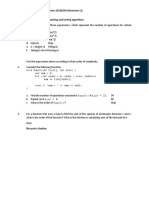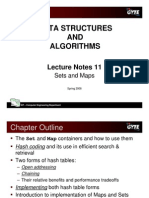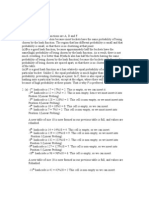0% found this document useful (0 votes)
118 views25 pagesHash Table PDF
The document summarizes hashing techniques. Hashing maps keys to table slots using a hash function to enable fast lookups. Collisions occur when distinct keys hash to the same slot. Separate chaining resolves collisions by storing keys in linked lists at slots. Open addressing resolves collisions by probing alternate slots using techniques like linear probing, quadratic probing, and double hashing. Hashing enables fast average-case lookups but can cause clustering which degrades performance. Prime table sizes and well-designed hash functions minimize collisions.
Uploaded by
John TitorCopyright
© © All Rights Reserved
We take content rights seriously. If you suspect this is your content, claim it here.
Available Formats
Download as PDF, TXT or read online on Scribd
0% found this document useful (0 votes)
118 views25 pagesHash Table PDF
The document summarizes hashing techniques. Hashing maps keys to table slots using a hash function to enable fast lookups. Collisions occur when distinct keys hash to the same slot. Separate chaining resolves collisions by storing keys in linked lists at slots. Open addressing resolves collisions by probing alternate slots using techniques like linear probing, quadratic probing, and double hashing. Hashing enables fast average-case lookups but can cause clustering which degrades performance. Prime table sizes and well-designed hash functions minimize collisions.
Uploaded by
John TitorCopyright
© © All Rights Reserved
We take content rights seriously. If you suspect this is your content, claim it here.
Available Formats
Download as PDF, TXT or read online on Scribd
/ 25



